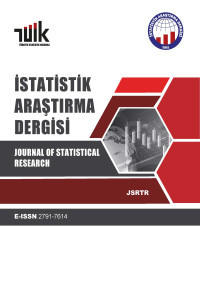Bulanık Sistem Modellerinin Gelişimi
Bu çalışmamızda, Bulanık Sistem Modelleri’nin tarihi gelişimi gözden geçirilecektir. Zadeh (1975) “Bulanık Kural Tabanları” teklif etmiş, ve bunları Sugeno-Yasukawa (1993) geliştirmiştir. Diğer bir yönden, Tagaki-Sugeno (1985) sağ tarafı “Kural Tabanı” sol tarafı “Regresyon Denklemi” olan modellerin gelişimi yönünde tekliflerde bulunmuşlardır. Daha sonraki yıllarda, “Kural Tabanları” yerine “Bulanık Regresyon” modelleri teklif edilmiştir. Bunların ilki Hathaway ve Bezdek, (1993) tarafından doğrusal “Bulanık C-Regresyon Modeli” [Fuzzy C-Regression Model, (FCRM)] olarak sunulmuştur ve Höppner ve Klawonn (2003), Hathaway ve Bezdek (1993) modelinin doğrusal olmayan (nonlinear) gelişimini teklif etmişlerdir. Bu çalışmalar ötesinde, Türkşen (2008) “Bulanık Fonksiyonlar” modelini Hathaway ve Bezdek (1993) ve Höppner ve Klawonn (2003) modelleri yerine yeni bir model yapısı olarak sunmuştur. Daha sonra Türkşen (2008)’in sunduğu “Bulanık Fonksiyonlar” çeşitli yönlerde Çelikyilmaz ve Türkşen (2008-2009) tarafından geliştirilmiştir.
Anahtar Kelimeler:
Bulanık kural tabanları, Bulanık fonksiyonlar, Bulanık regresyon, Bulanık öbekleme
Development of Fuzzy System Models
In this study, we first review the development of Fuzzy System Models in an historical perspective. “Fuzzy Rule Bases” proposed by Zadeh (1975), first were developed by Sugeno-Yasukawa (1993). Later Tagaki-Sugeno (1985) proposed models which has “Fuzzy Rulebases” on the left hand side and “Regression Equations” on the right hand side. Later on “Fuzzy Regression” models were proposed in place of “Fuzzy Rulebases”. First of these were proposed by Hathaway and Bezdek (1993) as "Fuzzy C-Regression Model". Secondly, Höppner and Klawonn (2003) proposed nonlinear versions of Hathaway and Bezdek (1993) model. Beyond these works, "Fuzzy Functions" were proposed by Türkşen (2008) in place of Hathaway and Bezdek (1993) and Höppner and Klawonn (2003) models. Further developments on “Fuzzy Functions” were proposed by Çelikyılmaz and Türkşen (2008-2009) in a variety of versions. An experimental assessment of all these models are also discussed in this study.
Keywords:
Fuzzy rule bases, Fuzzy functions, Fuzzy regression, Fuzzy clustering,
___
- Bezdek, J.C., 1981. Pattern Recognition with Fuzzy Objective Functions Algorithms. Kluwer Academic Publishers, Norwell, MA.
- Çelikyılmaz, A., Türkşen I.B., 2009. Modeling Uncertainty with Fuzzy Logic. Elsevier.
- Çelikyılmaz, A., Türkşen I.B., 2008. Enhanced Fuzzy System Models With Improved Fuzzy Clustering Algorithm. IEEE Transactions on Fuzzy Systems 16(3): 779-794.
- Çelikyılmaz, A., Türkşen I.B., 2008. Uncertainty Modeling of Improved Fuzzy Functions With Evolutionary Systems. IEEE Trans. On Sys., Man & Cybern., 38(4): 1098-1110.
- Çelikyılmaz, A., Türkşen I.B., 2008. Validation Criteria for Enhanced Fuzzy Clustering. Pattern Recognition Letters, 29: 97-108.
- Demirci, M., 1999. Fuzzy functions and their fundamental properties. Fuzzy Sets ve Systems, 106:239-246.
- Grinder, J., Bveler, R., 1976. Patterns of the Hypnotic Techniques of Milton H. Erickson. M.D. Volume I. Cupertino, CA: Meta Publications, ISBN 1555520529
- Hathaway, R.J., Bezdek, J.C., 1993. Switching regression models and fuzzy clustering. IEEE Trans. Fuzzy Syst., 1:195-204.
- Höppner, F., Klawonn, F., 2003. A Contribution to Convergence Theory of Fuzzy e-Means and Derivatives. IEEE Trans. on Fuzzy Systems, 11(5):682-694.
- Sasaki, M., 1993. Fuzzy Functions. Fuzzy Sets and Systems. 55(3): 295-301.
- Sugeno, M., Yasukawa, T., 1993. A Fuzzy-Logic- Based Approach to Qualitative Modeling. IEEE-Trans. on Fuzzy Systems, 1(1):7-31.
- Takagi T., Sugeno M., 1985. Fuzzy Identification of System and Its Application to Modeling and Control. IEEE, SMC-15:115-133.
- Türkşen, I.B., 2008. Fuzzy functions with LSE. Appl. Soft Comput., 8(3):1178-1188.
- Türkşen, I.B., 2009. Fuzzy System Models. Encyclopedia of Complexity and Systems Science, 4080-4094.
- Zadeh. L. H., 1975. The concept of a linguistic variable and its application to approximate reasoning. Part I:’ Inf. Sci., 8:199-249; ‘Part II:’ Inf. Sci., 8:301-357; ‘Part III:’ Inf. Sci., 9:43-80.
- ISSN: 1303-6319
- Başlangıç: 2002
- Yayıncı: TÜİK
Sayıdaki Diğer Makaleler
Sağa Çarpık Dağılım Ortalamaları için Bazı Testlerin Kullanımı ve Karşılaştırmaları
Emre Erçin SARISOY, Hamza GAMGAM
Doğrudan ve Dolaylı Mevsim Düzeltme Yaklaşımları: GSYİH Serileri için Bir Uygulama
Özlem YİĞİT, Bedriye SARAÇOĞLU
Türkiye’deki İllerin Sosyo-Kültürel Gelişmişlik Derecelerine Göre Değerlendirilmesi
Esin FİRUZAN, Yusuf Yüksel AYVAZ, Ersen UZUN
Gıda Tüketim Analizi: Genişletilmiş Doğrusal Harcama Sistemi
Mehmet Arif ŞAHİNLİ, Ahmet ÖZÇELİK
Bulanık Sistem Modellerinin Gelişimi
